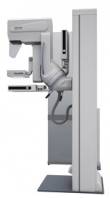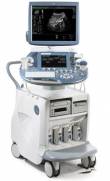By inflammatory diseases of the pelvic organs include inflammation of the endometrium and myometrium of the uterus, fallopian tubes, ovaries and pelvic peritoneum.
According to the shape of the flow inflammatory processes are divided into acute (occurs with pain of varying intensity, temperature reaction) and chronic (occurs without clinical symptoms and are identified by the delayed complications: infertility, ectopic pregnancy, and others.)
Risk factors for inflammatory diseases of the pelvic organs are earlier onset of sexual activity, multiple partners, method of contraception intrauterine system, inflammation of the pelvic organs in a partner, bacterial vaginosis. Aggravating factors in the development of inflammatory processes in the pelvis are menstruating, a medical abortion, curettage, insertion of an IUD, hysterosalpingography, and others.
Diagnosis of acute processes in the pelvis is based on the presence of three clinical signs of the following symptoms: symptoms during or after menstruation, abdominal pain, bleeding from the genital tract, mucous-purulent vaginal discharge, fever up to 38S0 or more violation urination, changes in blood count.
Differentiate inflammatory diseases pelvic diseases such as ectopic pregnancy, ovarian cysts, acute appendicitis, genital endometriosis, inflammatory bowel disease, myocardial uterine myoma node.
Complications of inflammatory processes in the pelvis are hydrosalpinx (serous fluid-filled fallopian tube), piosalpinks (pus-filled mass of the fallopian tube), complete or partial obstruction of the fallopian tubes and infertility, tubal-ovarian abscesses, pelvioperitonit, adhesions in the pelvic cavity and the abdominal cavity , chronic pelvic pain and dyspareunia, a violation of ovarian-menstrual cycle.
In view of the proximity of adjacent organs: colon, bladder, surrounding glands and fatty tissue formed proctitis, cystitis, with the possible development of pyelonephritis (kidney inflammation), paraproctitis, parauretrit etc.
Many physiological changes in women are accompanied by pain in the abdomen, in the lumbar region, in the crotch. How to distinguish normal from disease? What to look for? Soreness during menstruation and not only in the first or second day; long heavy menstruation, menstrual period ended, and the pain continued to bother; painful ovulation, pain during sexual intercourse, painful form of PMS. These symptoms can you push on the idea of inflammation.
What to do? Consult with your doctor to avoid complications.
Kryukov A.A.K inflammatory diseases of the pelvic organs include inflammation of the endometrium and myometrium of the uterus, fallopian tubes, ovaries and pelvic peritoneum.
According to the shape of the flow inflammatory processes are divided into acute (occurs with pain of varying intensity, temperature reaction) and chronic (occurs without clinical symptoms and are identified by the delayed complications: infertility, ectopic pregnancy, and others.)
Risk factors for inflammatory diseases of the pelvic organs are earlier onset of sexual activity, multiple partners, method of contraception intrauterine system, inflammation of the pelvic organs in a partner, bacterial vaginosis. Aggravating factors in the development of inflammatory processes in the pelvis are menstruating, a medical abortion, curettage, insertion of an IUD, hysterosalpingography, and others.
Diagnosis of acute processes in the pelvis is based on the presence of three clinical signs of the following symptoms: symptoms during or after menstruation, abdominal pain, bleeding from the genital tract, mucous-purulent vaginal discharge, fever up to 38S0 or more violation urination, changes in blood count.
Differentiate inflammatory diseases pelvic diseases such as ectopic pregnancy, ovarian cysts, acute appendicitis, genital endometriosis, inflammatory bowel disease, myocardial uterine myoma node.
Complications of inflammatory processes in the pelvis are hydrosalpinx (serous fluid-filled fallopian tube), piosalpinks (pus-filled mass of the fallopian tube), complete or partial obstruction of the fallopian tubes and infertility, tubal-ovarian abscesses, pelvioperitonit, adhesions in the pelvic cavity and the abdominal cavity , chronic pelvic pain and dyspareunia, a violation of ovarian-menstrual cycle.
In view of the proximity of adjacent organs: colon, bladder, surrounding glands and fatty tissue formed proctitis, cystitis, with the possible development of pyelonephritis (kidney inflammation), paraproctitis, parauretrit etc.
Many physiological changes in women are accompanied by pain in the abdomen, in the lumbar region, in the crotch. How to distinguish normal from disease? What to look for? Soreness during menstruation and not only in the first or second day; long heavy menstruation, menstrual period ended, and the pain continued to bother; painful ovulation, pain during sexual intercourse, painful form of PMS. These symptoms can you push on the idea of inflammation.
What to do? Consult with your doctor to avoid complications.
Kryukov AA

 (067) 625 55 50
(067) 625 55 50



 Glyanec
Glyanec